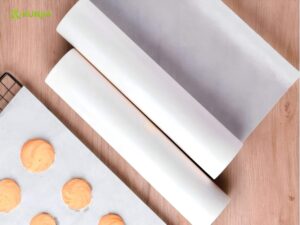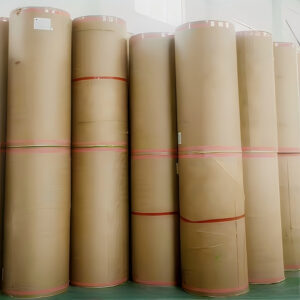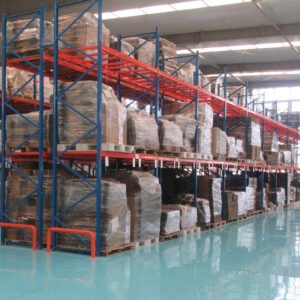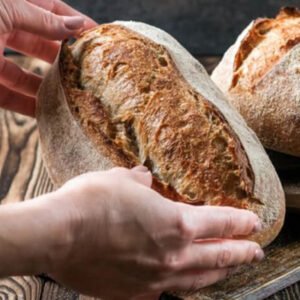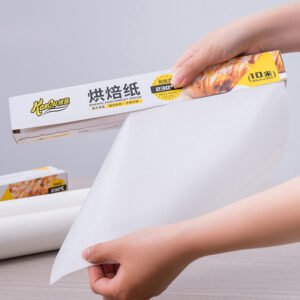In today’s fast-moving kitchens—from industrial bakeries to foodservice chains—every sheet of baking paper counts. Whether you’re trying to reduce waste, improve margins, or meet sustainability targets, one question comes up often:
👉 Can silicone-coated baking paper be reused? And if so, how many times?
At 倫家新材料, we specialize in manufacturing high-performance, food-safe baking paper for global B2B clients. Our silicone-coated paper is engineered for durability and repeat use—without compromising food safety or baking performance.
Here’s what industrial buyers, chefs, and private-label brands need to know.
🧪 What Makes Silicone-Coated Paper Reusable?
Unlike wax paper or foil, silicone-coated baking paper features a cured silicone layer bonded to a virgin pulp base. This creates a surface that’s:
- ✅ Non-stick
- ✅ Greaseproof (KIT level 9–12)
- ✅ Heat resistant up to 230°C (446°F)
- ✅ Compliant with FDA and EU food-contact regulations
At Runjia, we offer both 1S (single-sided) and 2S (double-sided) silicone-coated paper in roll and sheet formats. The result? A flexible, food-safe paper that can often handle multiple bakes—when used correctly.
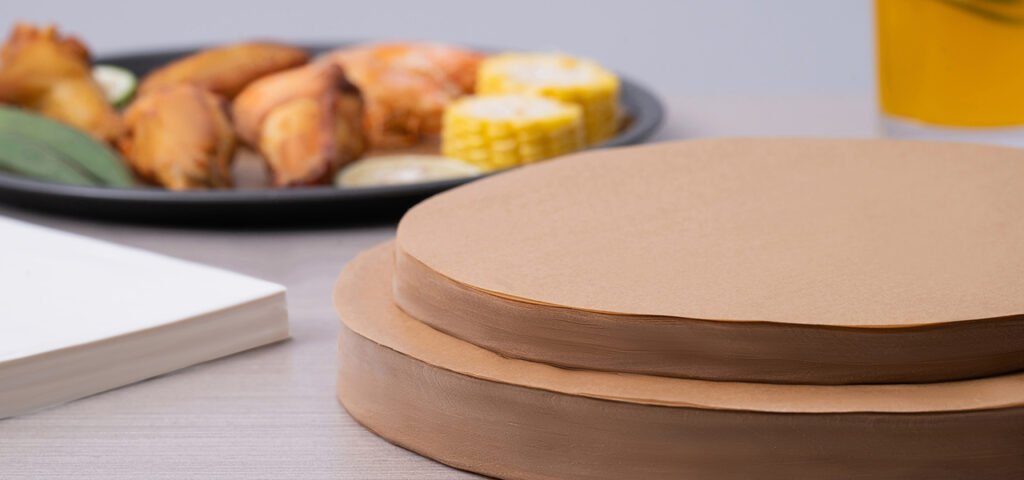
🔁 How Many Times Can It Be Reused?
There’s no fixed number—but here’s what our clients report:
| Use Case | Average Reuse Cycles |
|---|---|
| Dry baking (cookies, pizza) – Home Use | 3–5 times |
| Medium-fat baking (pastries, bread) – Commercial | 2–3 times |
| High-fat or sugary baking (cheese, syrupy items) | 1–2 times |
Reuse depends on:
- Baking temperature – higher heat shortens life
- Food type – greasy or sugary = fewer uses
- Coating type – 2S performs better than 1S
- Cleaning method – gentle wipes help extend life
- Airflow and equipment – even heat = longer usability
🧼 Cleaning Between Uses: Do’s and Don’ts
To maximize reuse without risking safety, follow these guidelines:
✅ DO:
- Let the sheet cool before cleaning
- Gently wipe with a damp cloth (no scrubbing)
- Store flat or rolled in a dry, cool space
- Use for similar recipes each time (e.g. only pastry or bread)
❌ DON’T:
- Reuse after contact with melted cheese, sugar, or sauce
- Scrub, soak, or fold the paper
- Continue using once the non-stick layer weakens
- Bake beyond 230°C (446°F)
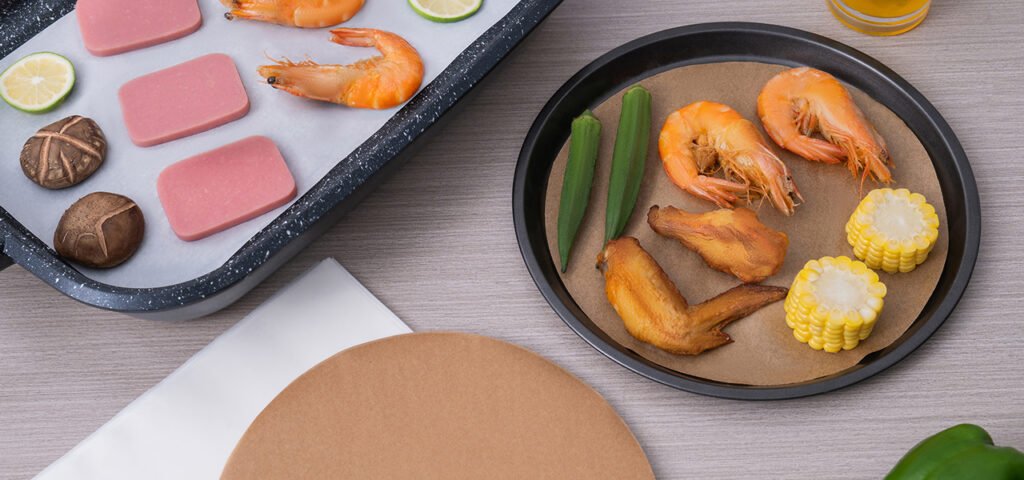
🔍 When to Retire the Sheet
You’ll know it’s time to replace your baking paper when you notice:
- 🔥 Burnt edges
- 🧈 Oil seep-through
- 🧲 Sticking or tearing
- 💨 Unusual smoke or odor in the oven
Safety always comes first. Especially in commercial kitchens operating under HACCP, ISO9001, or BRC standards—reusing compromised paper is never worth the risk.
📦 Is Reusable Baking Paper Cost-Effective?
Absolutely—when used with care.
Although silicone-coated paper has a higher upfront cost than wax paper or foils, it helps reduce:
- 💸 Total liner usage
- 🗑️ Trash volume
- ⏱️ Time spent replacing sheets
- 🧼 Tray scrubbing and cleanup
Runjia supports bulk buyers with:
- OEM private label options
- FSC-certified paper
- Custom GSM for strength and heat performance
- Volume discounts for rolls, sheets, and retail-ready dispenser boxes
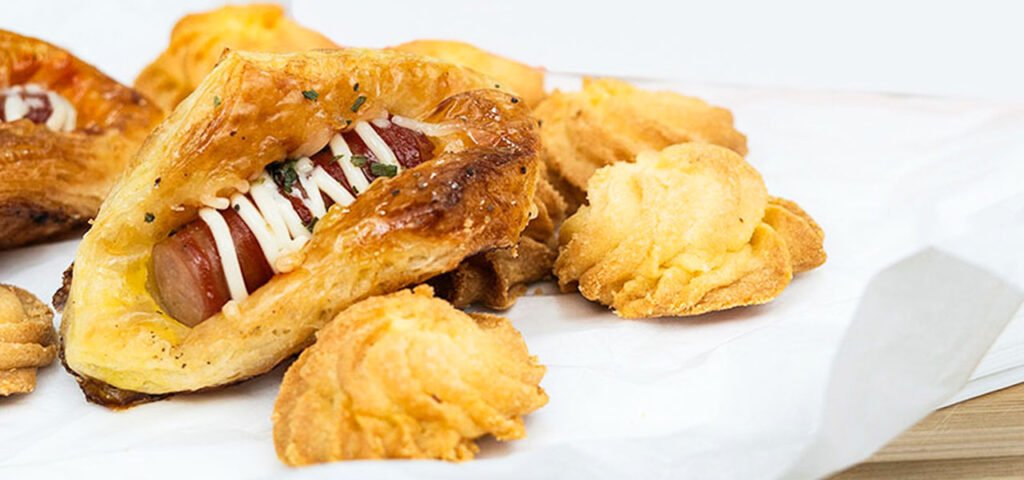
♻️ Reuse & Sustainability Go Hand in Ha
Choosing reusable, food-safe parchment is also an eco-conscious decision. All of Runjia’s silicone-coated baking papers are:
- 🌱 PFAS-free & chlorine-free
- 🌲 FSC-certified
- 📦 Packed in plastic-free, recyclable cartons
- 🔄 Compatible with green kitchen practices and circular waste initiatives
🧾 Final Takeaway: Know When to Reuse—And When to Replace
Reusable baking paper is a smart choice—when used wisely. Runjia’s silicone-coated parchment is built for repeat bakes, giving you more mileage from each sheet while maintaining safety, quality, and oven performance.
Whether you operate a bakery, meal kit line, or food prep facility, our team can help you optimize both usage and cost.
Want to request samples or explore our 1S vs. 2S formats?
Reach out to our export team:
📧 Email: sales21@runjianewmaterial.com
🌐 Website: https://runjiapaper.com
📘 Facebook: Runjia Facebook Page



